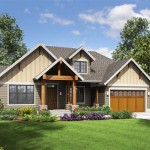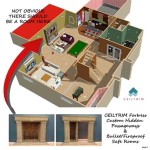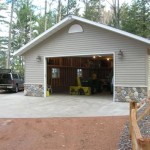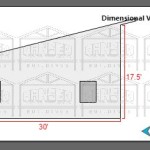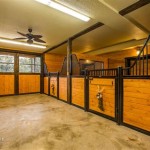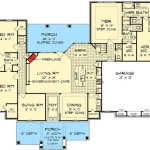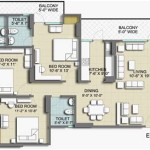House Plans Designed To Maximize Mountain Views
Designing a home to capture and celebrate mountain views requires careful planning and consideration. The surrounding landscape becomes an integral part of the living experience, influencing everything from the orientation of the house to the selection of materials and window placement. House plans optimized for mountain views aim to seamlessly blend the interior and exterior, creating a harmonious and visually stunning living environment.
The process of designing such a home begins with a thorough site analysis. Understanding the topography, existing vegetation, prevailing winds, and sun path is crucial. These factors will dictate the optimal placement of the house on the lot to maximize views while minimizing environmental impact. The design should aim to preserve the natural beauty of the landscape and integrate the home into its surroundings.
Furthermore, local building codes and regulations, including height restrictions and setback requirements, must be considered from the outset. Ensuring compliance with these regulations will prevent delays and complications during the construction process. A professional architect or designer specializing in mountain home design can provide valuable expertise in navigating these requirements.
Strategic Orientation and Window Placement
One of the most critical aspects of designing a mountain view home is the strategic orientation of the building. The house should be positioned to take full advantage of the panoramic vistas. This typically involves orienting the primary living spaces, such as the living room, dining room, and master bedroom, towards the mountain range. The angle of the sun should also be taken into account to minimize glare and heat gain, particularly during the summer months. Overhangs, awnings, and carefully selected window treatments can help to mitigate these issues.
Window placement is equally important. Large, strategically positioned windows frame the mountain views, bringing the outdoors in and filling the interior spaces with natural light. These windows should be carefully selected to maximize energy efficiency and minimize heat loss during the winter. Options such as low-E glass and insulated frames can significantly improve the thermal performance of the home. Consider the size and shape of the windows, balancing the desire for expansive views with the need for privacy and energy conservation.
In addition to large picture windows, consider incorporating other types of windows, such as clerestory windows, to bring in natural light while maintaining privacy. Clerestory windows are positioned high on the walls, allowing sunlight to enter without directly exposing the interior to the outside world. Skylights can also be used to introduce natural light into areas where traditional windows are not feasible. The strategic use of different window types can create a dynamic and visually appealing interior space.
Consider the use of sliding glass doors or French doors to create a seamless transition between indoor and outdoor living spaces. These doors can lead to decks, patios, or balconies, providing access to outdoor areas where residents can enjoy the mountain views and fresh air. Outdoor living spaces should be designed as an extension of the interior, with comfortable seating, outdoor kitchens, and fireplaces to create inviting gathering spots.
Finally, the design should consider the privacy of the occupants. While maximizing views is a priority, it is also important to ensure that the home provides a sense of privacy and security. This can be achieved through the strategic placement of windows, the use of landscaping, and the incorporation of architectural features such as privacy screens or pergolas.
Material Selection and Architectural Style
The choice of materials significantly impacts the aesthetic appeal and functionality of a mountain view home. Materials should be selected to complement the surrounding landscape and create a cohesive design. Natural materials, such as wood, stone, and timber, are often favored for their durability, visual warmth, and ability to blend seamlessly with the environment. Locally sourced materials can further enhance the connection to the region and reduce the environmental impact of construction.
The architectural style of the home should also be carefully considered. Popular styles for mountain homes include rustic, contemporary, and craftsman. Rustic designs often feature exposed timber beams, stone fireplaces, and wood siding, creating a warm and inviting atmosphere. Contemporary designs emphasize clean lines, large windows, and open floor plans, maximizing views and natural light. Craftsman-style homes typically incorporate handcrafted details, such as exposed rafters, decorative brackets, and intricate trim work. Choosing an architectural style that complements the landscape and reflects the personal preferences of the homeowner is essential.
The color palette should also be carefully selected to harmonize with the surroundings. Earth tones, such as browns, greens, and grays, are often used to create a natural and understated aesthetic. Accents of color can be added to create visual interest and personality. Consider the impact of different colors on the overall mood and atmosphere of the home.
Furthermore, consider the sustainability of the materials used in the construction. Opt for eco-friendly options such as reclaimed wood, recycled materials, and energy-efficient appliances. Sustainable building practices can reduce the environmental impact of the home and create a healthier living environment for the occupants.
Exterior lighting should be carefully planned to enhance the beauty of the home at night while minimizing light pollution. Use shielded fixtures to direct light downwards and avoid excessive brightness. Landscape lighting can be used to highlight architectural features and create a welcoming ambiance.
Interior Design and Space Planning
The interior design of a mountain view home should complement the exterior architecture and maximize the enjoyment of the surrounding landscape. Open floor plans are often favored, as they allow for unobstructed views and create a sense of spaciousness. The layout should be designed to facilitate easy flow between different areas of the home, making it comfortable and functional for everyday living.
Furniture should be carefully selected to complement the architectural style and color palette of the home. Choose pieces that are comfortable, durable, and visually appealing. Avoid clutter and unnecessary ornamentation, allowing the views to take center stage. Use natural materials such as wood, leather, and wool to create a warm and inviting atmosphere.
The color scheme should be consistent throughout the home, creating a sense of harmony and cohesion. Use neutral colors as a backdrop and add accents of color to create visual interest. Consider the impact of different colors on the mood and atmosphere of each room. For example, warm colors such as reds and oranges can create a cozy and inviting atmosphere, while cool colors such as blues and greens can create a calming and relaxing atmosphere.
Lighting is an important element of interior design, particularly in a mountain view home. Natural light should be maximized through the use of large windows and skylights. Artificial lighting should be carefully planned to complement the natural light and create a warm and inviting atmosphere. Use a combination of ambient, task, and accent lighting to create a layered and dynamic effect. Consider the use of dimmer switches to adjust the brightness of the lights according to the time of day and the activity being performed.
Finally, consider the functionality of each room and design the space to meet the specific needs of the occupants. For example, the kitchen should be designed for efficient cooking and entertaining, while the master bedroom should be a relaxing sanctuary. Incorporate storage solutions to minimize clutter and maximize space. The goal is to create a home that is both beautiful and functional, providing a comfortable and enjoyable living environment for years to come.
Thoughtful consideration of these design elements will result in a mountain view home that not only captures stunning vistas but also provides a comfortable, functional, and aesthetically pleasing living space that harmonizes with its natural surroundings.

Mountain View House Plan Lodge Plans

Mountain View House Plans 3 Bedroom Floor Hillside Designs One Level

Mountain View Craftsman Home Architectural House Plans

Mountain House Plans By Max Fulbright Designs

Mountain View Ward Cedar Log Homes

Appalachia Mountain A Frame Lake Or House Plan With Photos Plans Rustic

Mountain House Plans Homes For Your Getaway

Mountain House Plans By Max Fulbright Designs

Why Building A Mountain House Plan Is Great For Your Family Dfd Plans Blog

Plan 012h 0041 The House

